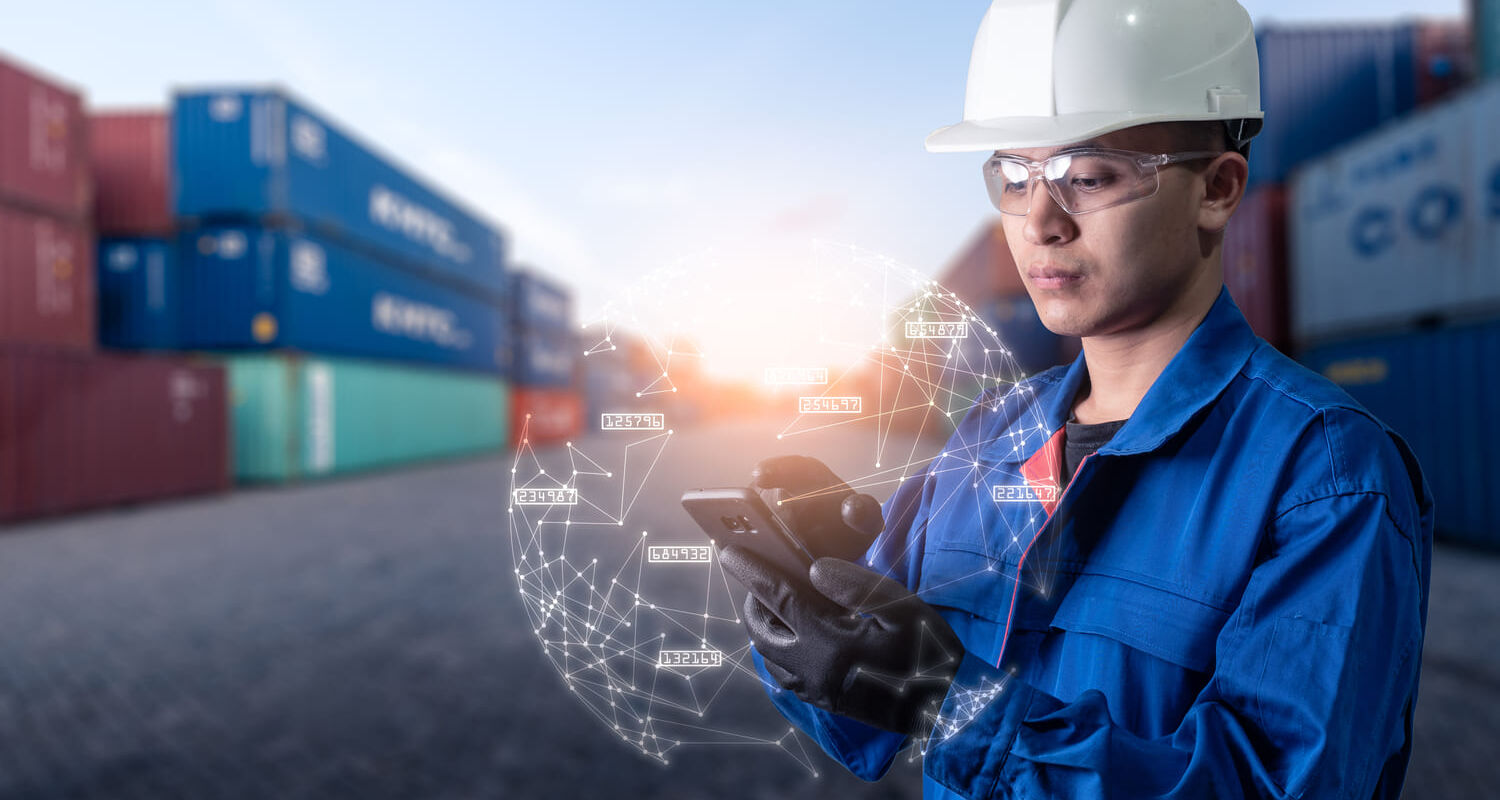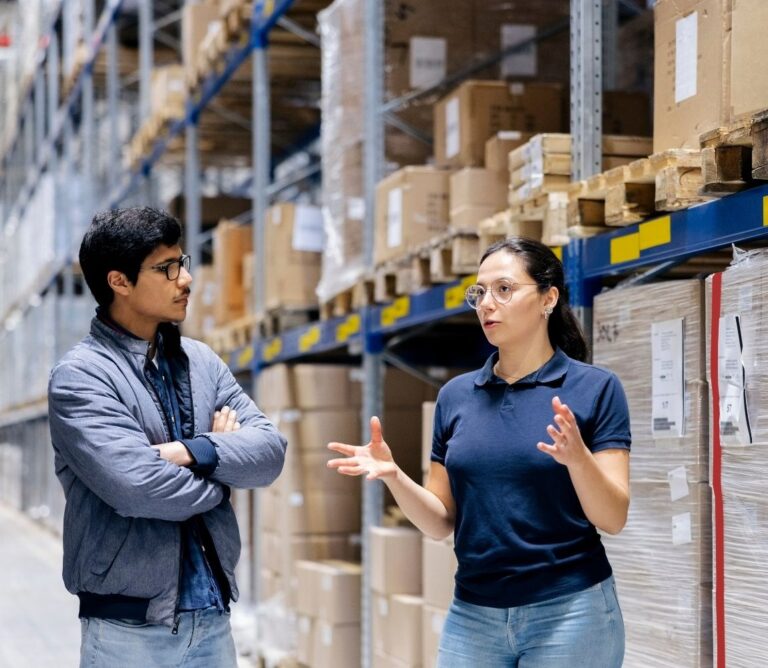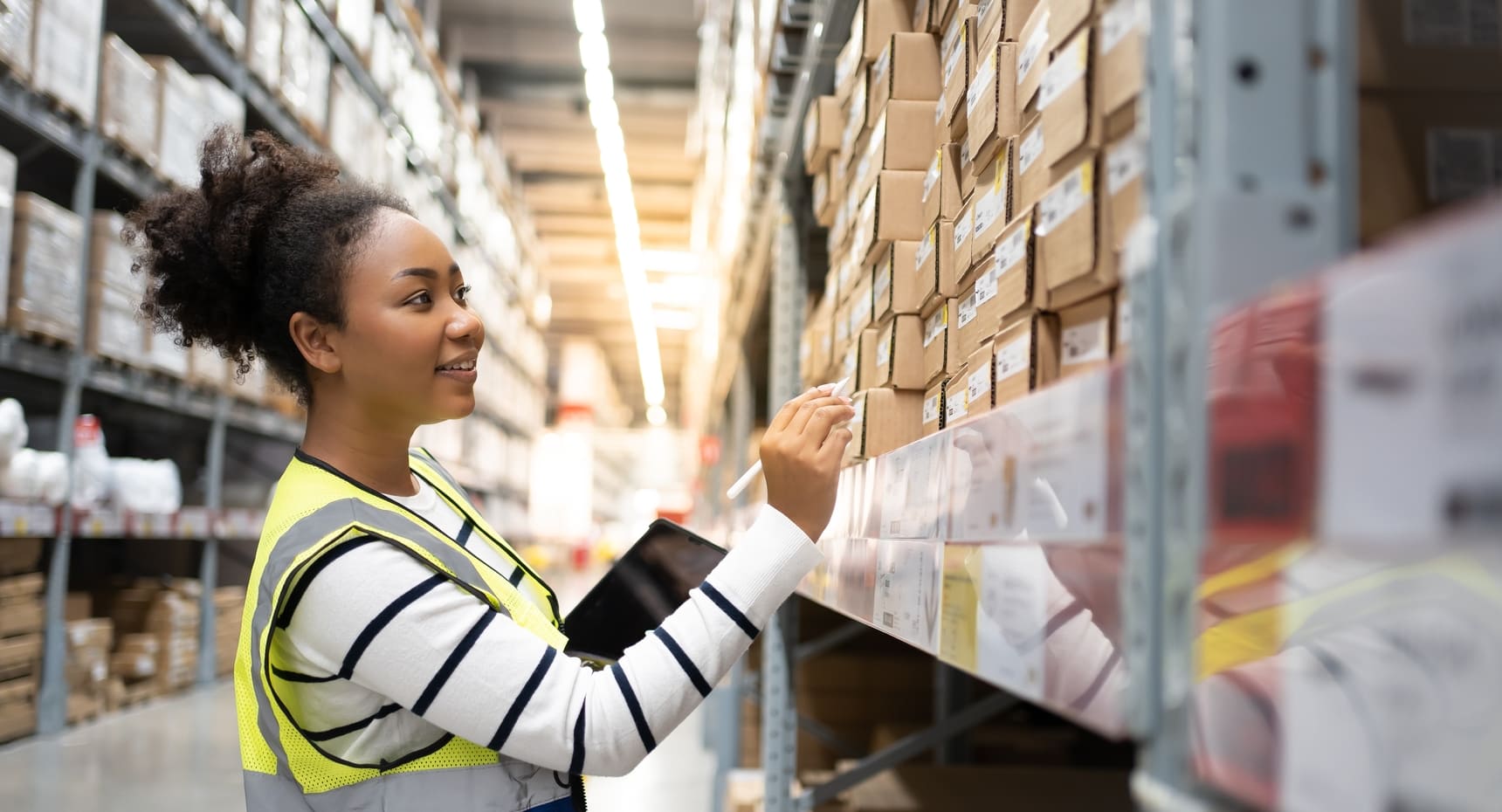Blockchain in Supply Chain: Enhancing Transparency and Trust

Supply chains are complex networks that span manufacturers, suppliers, logistics providers and retailers. Lack of visibility across these nodes leads to fraud, delays, counterfeiting and mistrust. Blockchain offers a decentralized, immutable ledger that can record every transaction and movement of goods in real time. According to industry analyses, blockchain can increase trust, security and transparency among member organizations by improving the traceability of data across a business network. By providing a transparent and immutable ledger with real‑time visibility into supply‑chain operations, blockchain improves traceability and fosters collaboration across stakeholders.
Supply‑chain challenges and the need for transparency
Global supply chains suffer from fragmented data silos, manual paperwork and opaque processes. Counterfeiting, grey‑market diversion and inaccurate documentation erode trust and increase risk. Tamper‑proof record creation and real‑time tracking reduce counterfeiting and improve efficiency. Blockchain’s ability to record transactions immutably means that all stakeholders can view the same source of truth, mitigating disputes and enabling faster decision‑making.
How blockchain works in supply chains
Distributed ledger & immutable records
At its core, a blockchain is a distributed database shared across a network of participants. Each block contains a batch of transactions that are cryptographically linked to the previous block. Once recorded, data cannot be altered without consensus from the network. This immutability provides a trusted audit trail and increases transparency. In supply chains, each transfer of goods, financial transaction or quality check can be logged on the ledger, creating a traceable chain of custody.
Smart contracts and automation
Smart contracts are self‑executing agreements coded on the blockchain. When predefined conditions are met- such as a shipment arriving or a quality test passing-the contract automatically triggers actions like releasing payment or updating inventory. Using blockchain in conjunction with smart contracts reduces disputes about milestones and contract terms being executed. Automating settlements not only speeds up payments but also reduces administrative overhead.
Integration with IoT and track‑and‑trace systems
Blockchain becomes even more powerful when combined with Internet of Things (IoT) sensors and track‑and‑trace technologies. Data such as temperature, humidity and location captured by IoT devices can be written to the blockchain, providing real‑time visibility into shipments. Research highlights that integrating IoT with blockchain enhances supply‑chain transparency, security and efficiency by enabling real‑time tracking of goods. This visibility helps detect anomalies early, reduce spoilage, and ensure compliance with quality standards.
Benefits of blockchain in supply chain
Transparency and trust
Every participant in a blockchain network shares the same ledger. This shared visibility eliminates data asymmetry and builds trust among suppliers, manufacturers and customers. An immutable ledger improves supplier relationships and collaboration. Consumers can scan a product’s QR code to verify its origin and ethical sourcing, boosting brand credibility.
Traceability and authenticity
Blockchain allows companies to trace the movement of goods from raw materials to finished products. Tamper‑proof record creation enables real‑time tracking and reduces counterfeiting. By assigning digital identities to batches or individual items, stakeholders can verify provenance, detect diversion and quickly execute recalls. Real‑time transaction recording also reduces delays and human errors.
Efficiency and cost reduction
Paper‑based documentation and manual reconciliations create bottlenecks. By automating workflows and settlements through smart contracts, blockchain reduces administrative costs. Transactions are recorded in real time, improving traceability and accountability and reducing delays and human errors. Faster dispute resolution decreases legal costs and improves cash flow.
Risk management and sustainability
Blockchain’s auditability aids regulatory compliance and risk management. Shared data enables early detection of quality issues and more efficient recalls. For sustainability initiatives, blockchain can help track carbon footprints, certify fair‑trade practices and ensure ethical sourcing by creating verifiable records of environmental and social metrics. While research into blockchain‑based sustainability is still emerging, the technology’s transparency provides a foundation for ESG reporting and responsible supply chains.
Real‑world use cases
Food and agriculture
Food supply chains involve multiple intermediaries, and contamination can have serious public health consequences. By logging every step-from farm to retailer-on a blockchain, companies can trace sources of contamination within seconds rather than days. Implementing blockchain enables real‑time tracking of goods and information flow from origin to destination. Major retailers and producers have partnered with technology providers to create food‑traceability networks that allow consumers to verify the journey of produce, meat and seafood.
Pharmaceutical supply chains
Counterfeit medicines pose risks to patient safety and corporate reputation. Blockchain can record serial numbers, manufacturing data and temperature logs for each batch of medicines. Because data on a blockchain cannot be altered without consensus, stakeholders—including manufacturers, distributors, regulators and pharmacies—can verify the authenticity of pharmaceutical products. Real‑time visibility also helps ensure compliance with stringent regulations such as the U.S. Drug Supply Chain Security Act.
Logistics and shipping
Complex logistics operations involve carriers, freight forwarders, customs authorities and port operators. Blockchain platforms enable parties to share documents, shipping manifests and status updates on a single ledger, reducing paperwork and delays. Smart contracts automate payments when shipments arrive, while IoT sensors feed location and condition data into the blockchain. This improves end‑to‑end visibility and helps optimize routing and resource utilization.
Sustainable supply chains
Organizations are increasingly expected to report environmental and social impacts. Blockchain can be used to record sustainable practices such as recycled material content, renewable energy usage and fair‑trade certifications. When combined with IoT sensors and satellite data, blockchain can provide verifiable evidence of reduced carbon emissions or regenerative farming practices. This transparency helps brands meet ESG goals and respond to consumer demand for ethical products.
Steps to implement blockchain in your supply chain
- Define objectives and map processes: Identify pain points (e.g., lack of traceability, counterfeit goods, delays) and determine which processes could benefit from blockchain.
- Choose a blockchain type: Decide between permissioned (consortium) networks-which restrict access to known participants—and public blockchains. Consortium blockchains are common in supply‑chain consortia because they balance transparency with privacy.
- Pilot a small use case: Start with a limited scope, such as tracking a high‑value product line or automating a single document workflow. Use the pilot to validate assumptions and measure ROI.
- Integrate IoT and data sources: Deploy sensors or leverage existing ERP/warehouse‑management systems to capture data that will feed the blockchain. Ensure data quality and consider oracle services for off‑chain data.
- Develop smart contracts: Collaborate with legal and technical experts to encode business rules into smart contracts. Test thoroughly to avoid bugs and ensure that contract terms reflect real‑world agreements.
- Address governance and compliance: Establish rules for data access, privacy, audit rights and dispute resolution. Align the project with industry regulations (e.g., food safety, pharmaceuticals, customs).
- Scale gradually and iterate: After a successful pilot, expand the scope to include more products, suppliers and logistics partners. Continuously improve and monitor performance metrics.
Challenges and considerations
Implementing blockchain in supply chains comes with obstacles. Scalability and energy consumption can be concerns, especially with public blockchains. Selecting the right consensus mechanism (e.g., Proof‑of‑Authority for private networks) helps balance performance and security. Data privacy requires careful design-sensitive information may need to be stored off‑chain or protected with cryptographic techniques. Interoperability is another challenge; firms must agree on data standards and integrate blockchain platforms with legacy systems. Finally, adoption requires collaboration across multiple stakeholders; without broad participation, the benefits of a shared ledger diminish.
The Future of Blockchain in Supply Chain
The future of supply‑chain management will likely involve a convergence of blockchain with artificial intelligence (AI), machine learning and digital twins. AI can analyze blockchain data to predict demand and optimize routing. Zero‑knowledge proofs and privacy‑preserving technologies may allow companies to verify information (like sustainability metrics) without revealing sensitive data. Decentralized finance (DeFi) could enable novel supply‑chain financing models where invoices are tokenized and traded instantly. As standards mature and regulatory clarity improves, more industries will adopt blockchain to build resilient, transparent and sustainable supply chains.
Conclusion
Blockchain has moved from hype to practical application in supply chains. Its decentralized, immutable ledger fosters transparency, traceability and trust among stakeholders, while smart contracts automate workflows and reduce costs. Integrating blockchain with IoT and data analytics enables real‑time visibility and enhances risk management and sustainability. By following a structured implementation roadmap, organizations can pilot blockchain projects and gradually scale them to transform their supply chains. For businesses seeking to strengthen transparency, improve customer trust and stay competitive, embracing blockchain technology is no longer optional, it’s a strategic imperative.
Frequently Asked Questions (FAQ) – OLIMP Warehousing
Q: How does blockchain improve supply chain transparency and traceability?
Blockchain is a decentralized, shared ledger that records transactions in an immutable way. In supply‑chain management, it allows all participants to view the same record of product movements, certifications and payments, increasing transparency and reducing fraud.
Q: How does blockchain improve supply chain transparency and traceability?
Blockchain provides a transparent and immutable ledger that offers real‑time visibility into supply‑chain operations. Every transaction is timestamped and linked to the previous one, making it easy to trace a product’s origin and journey and detect tampering
Q: What are the benefits of blockchain in supply chain logistics?
Key benefits include improved transparency and trust, enhanced traceability and authenticity, reduced administrative costs and delays, and better collaboration among suppliers and customers. Real‑time transaction recording improves accountability and reduces human errors.
Q: How do smart contracts work in a supply chain?
Smart contracts are self‑executing agreements stored on the blockchain. They automatically trigger actions, such as releasing payment or updating inventory, when predefined conditions are met. Using blockchain with smart contracts reduces disputes about milestones and contract terms.
Q: How can blockchain support sustainable supply chains?
By recording environmental and social metrics on a transparent ledger, blockchain enables companies to prove sustainable sourcing and monitor carbon footprints. The immutable records build trust among consumers and regulators and help firms meet ESG reporting requirements.
Q: What are some real‑world examples of blockchain in supply chains?
Food‑traceability networks allow retailers and consumers to track produce from farm to table in real time. Pharmaceutical consortia use blockchain to authenticate medicines and prevent counterfeit drugs, while logistics platforms share shipping documents and automate payments using smart contracts.
Q: How can you implement blockchain in your supply chain?
Start by identifying pain points and choosing the right blockchain type. Pilot a small use case, integrate IoT data sources, develop smart contracts and address governance and compliance. Scale gradually as more partners join and the network proves its value.
You may be interested in

Staples Modernizes Fulfillment with Cloud-Based Warehouse Management System (WMS) Upgrade
Facing growing e-commerce and B2B demand, Staples embarked on a major warehouse management system (WMS) overhaul. The goal was to replace its legacy, on-premises WMS – which had become hard to update or integrate – with a modern cloud-based warehouse management system to maintain its 98% next-day delivery promise. The new cloud WMS would modernize […]

Omnichannel Logistics: Strategies for E‑Commerce Success
The surge in e‑commerce has transformed how goods move from producers to consumers. Statista projects that the global last‑mile delivery market will exceed $200 billion by 2027, up from $108.1 billion in 2020. At the same time, research shows that 60 – 70 % of consumers shop both online and in physical stores. These shoppers expect fast shipping, convenient pick‑up options […]

The Future of Ecommerce Warehousing: How Online Retail is Shaping the Industry
The rapid rise of online retail has fundamentally reshaped the warehousing industry, driving demand for more efficient, scalable, and technology-driven storage and fulfillment solutions. Warehousing, once a back-end support function, is now a strategic cornerstone of ecommerce operations. Consumers expect ever-faster delivery (same-day shipping is increasingly common) and hassle-free returns, pressuring businesses to store products […]
Ready to streamline your warehousing needs?
Request a quote today and discover how OLIMP's tailored solutions can optimize your operations